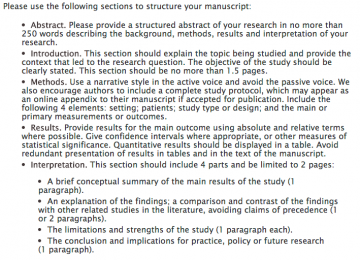WORTH: 25% of class mark
FORMAT: A scientific manuscript written to the specifications of the Canadian Medical Association Journal (CMAJ) guidelines for research articles.
DUE: March 17, 2017. A hard copy is due at the beginning of class. Late assignments will not be accepted.
RETURN: I will have these marked to return in class on March 31, 2017.
Instructions
- Choose a method for dealing with radon concentrations <LOD.
- Consider all of the factors that could affect main floor radon concentrations in British Columbia, and develop a cohesive set of hypotheses based on the variables in the original dataset as well as those that have been added by you (I expect you to use your own added variable) and others.
- Choose a restricted set of AT LEAST five and AT MOST ten variables that can help you to address your hypotheses, and be sure to describe these variables carefully in your methods section — where did they come from, what are the units for continuous variables, what are the groupings for dichotomous and categorical variables?
- For example, you could hypothesize that housing characteristics are of most interest to you and thus restrict your variables to FOUNDATION, HEATING, HOMEAGE, SEPARATION and a variable like RENTAL (percent rental properties in area, and indicator of average upkeep) for your analyses.
- Choose a subset of the observations is you think is best suited to exploring you hypotheses. For example, you could restrict the dataset to homes <20 year of age at the time of sample. You must have at least 200 observations in your subset.
- Decide whether you will treat radon concentrations as a continuous variable (multiple linear regression) or a binary variable (multiple logistic regression).
- Explore your hypotheses using all of the tools that you have learned in class, including visualization techniques, tests of association, and regression models.
- Report your most interesting findings, including the best explanatory multiple regression model that you could produce.
- Your multiple regression model MUST include at least one dichotomous or categorical variable and one continuous variable, and you must describe the effects (with confidence intervals) of each variable on radon concentrations or the odds of high radon in a table or in the text.
- You must describe the criteria you used for identifying the best model, and how the best model compared with at least one alternate model with respect to F-statistics, R-squared values, or information criteria, where applicable.
- You must generate radon concentration predictions for two different scenarios covered by your variables, preferably a high radon scenario and a low radon scenario.
- I do not care whether or not you can demonstrate a statistically significant associations between the variables, null results are perfectly acceptable.
Mock Article
- Please read the Instructions to Authors and follow those for submission to the research articles (about halfway down the page).
- Don’t worry about the fact that this is a clinical journal and you are no reporting clinical results. Take the perspective that you are writing an article to help educate Canadian physicians about factors that might be associated with high radon exposure in their patients.
- Note that the 2500 word limit is for the main text, and does not include the text needed to describe tables and figures.
- You can have up to four tables/figures, meaning one table and three figurers, two tables and two figures, etc.
- Use these stated guidelines to help you structure your assignment:
Marking
- Abstract (2 marks)
- Introduction (4 marks)
- Methods (6 marks)
- Results (6 marks)
- Discussion/interpretation (7 marks)



